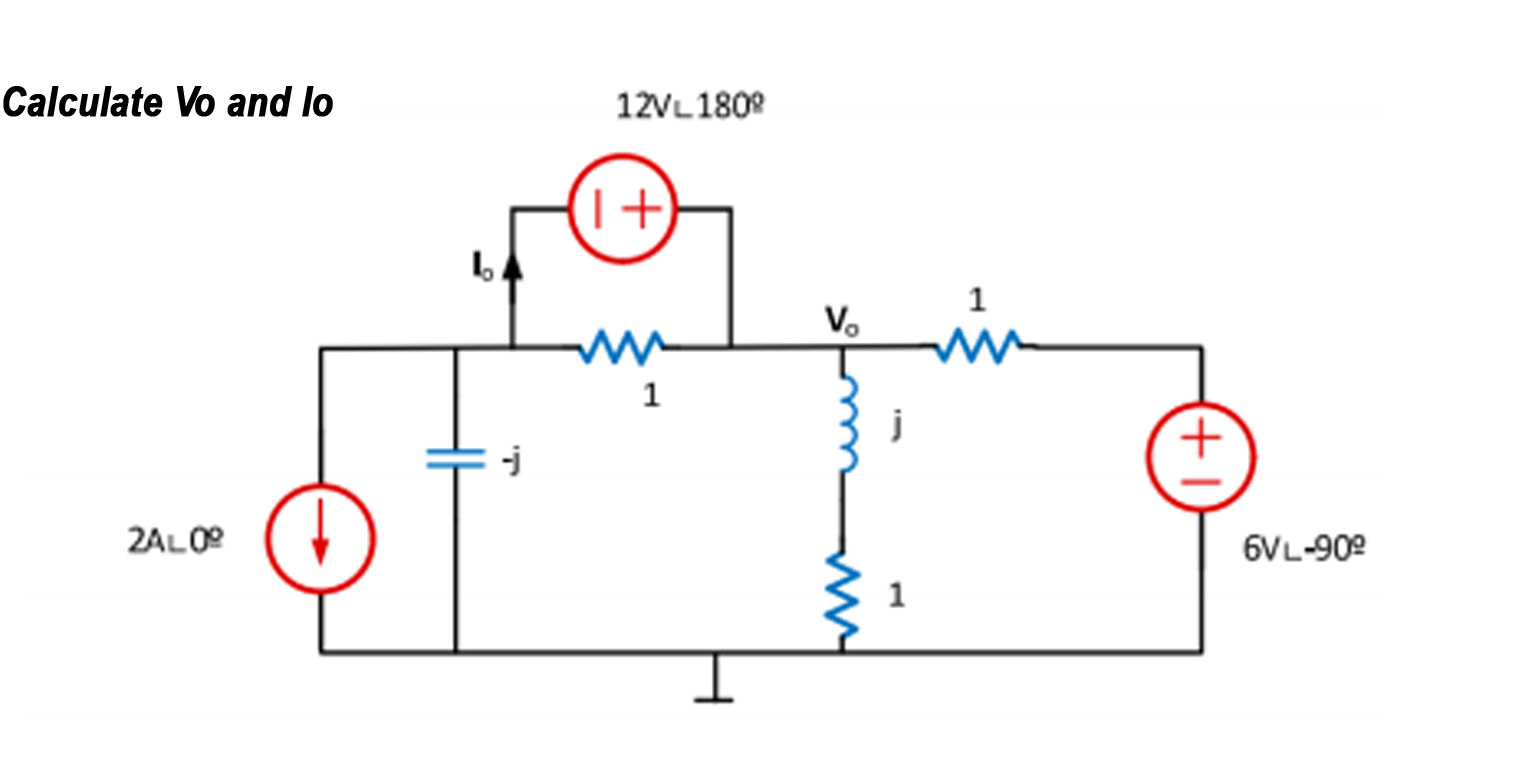I'm trying to calculate Vo and Io from the following circuit:
I was using node analysis but I don't really know how that worked. A friend of me told me that I could better us superposition. I understand that I have to calculate the current for each generator with the others excluded (open for current, short-circuit for voltage) so i would have 3 different problems to solve in this case. Now I looked up some examples online but they don't include capacitors or imaginary numbers (the j in the circuit is considered the imaginary number i, to avoid conflicts with the current I). Can anyone explain me how I would solve this?

